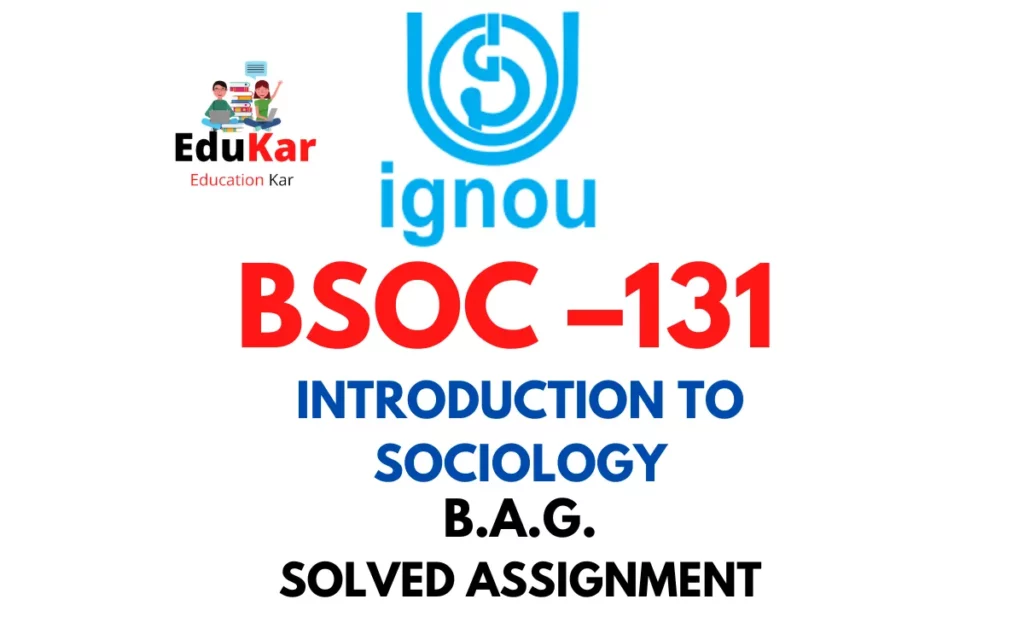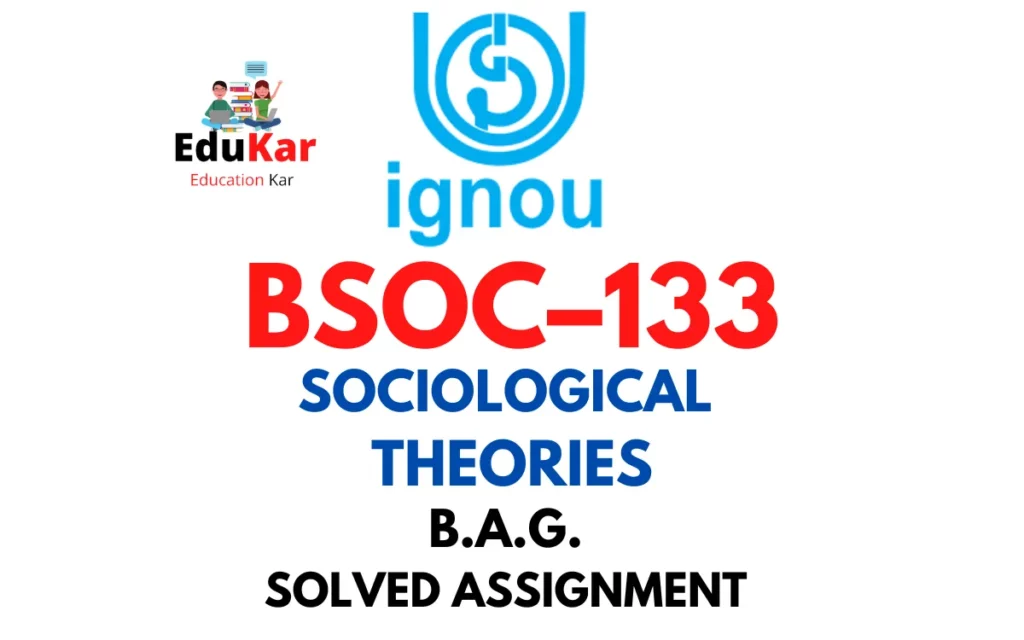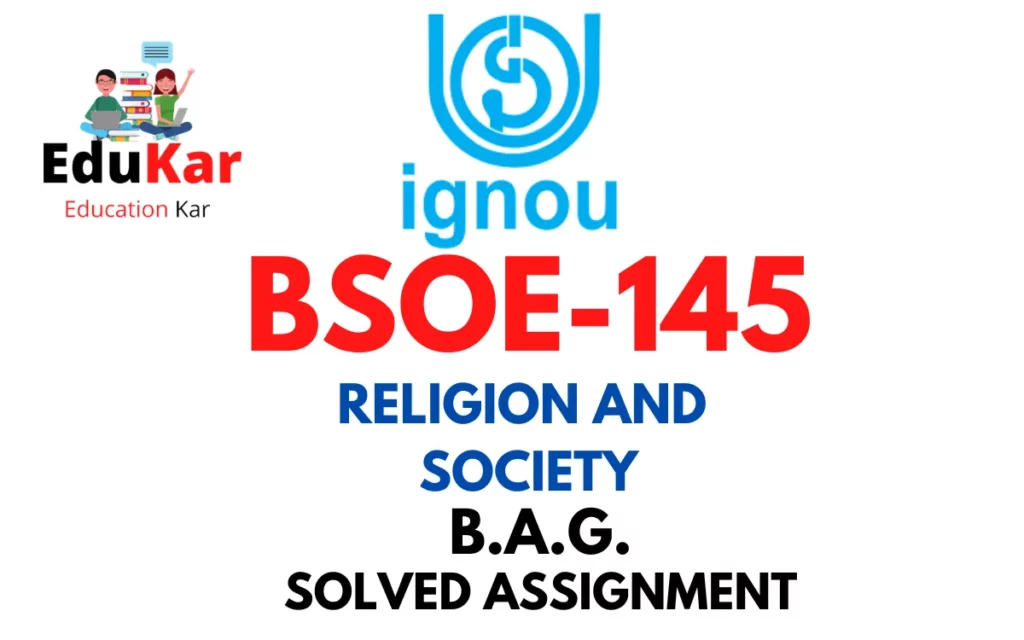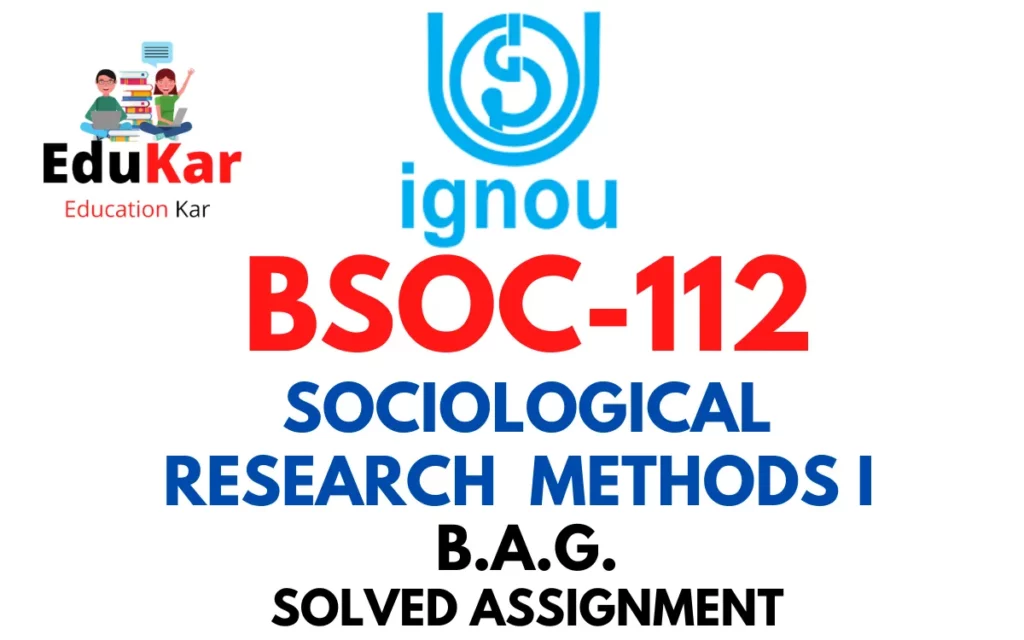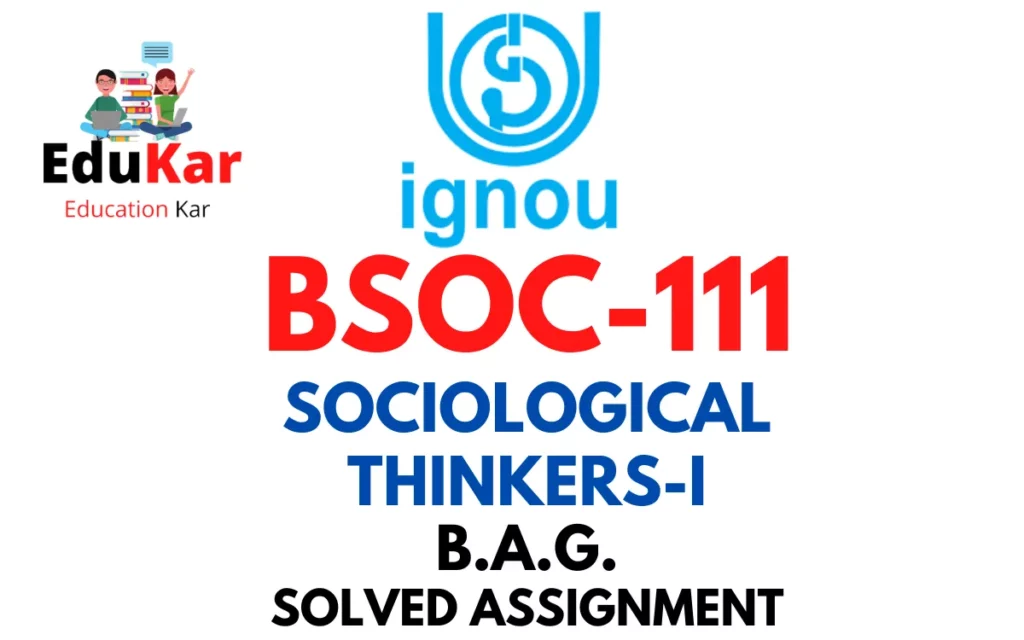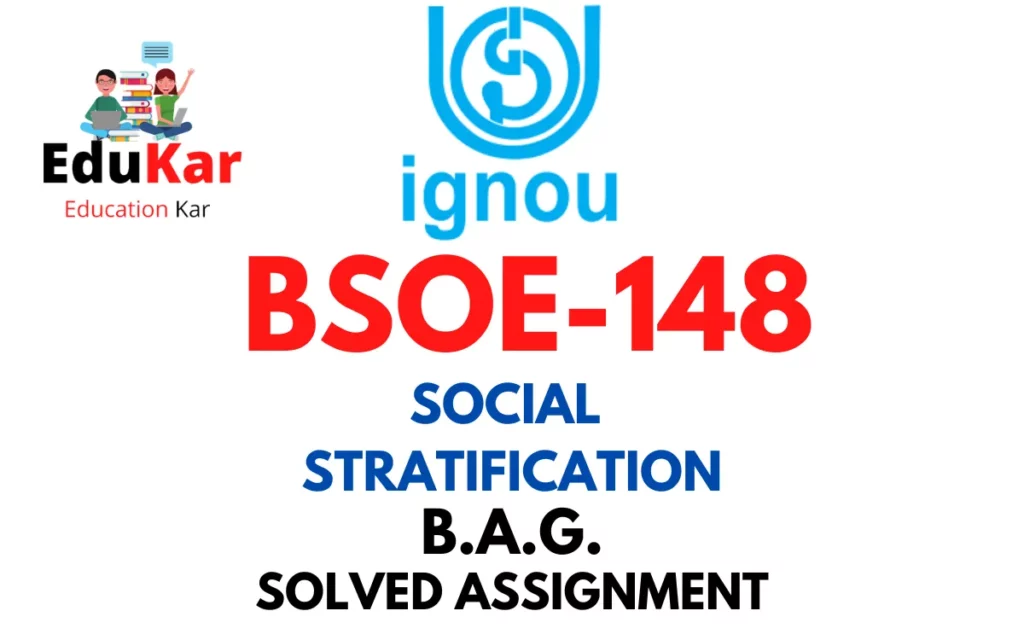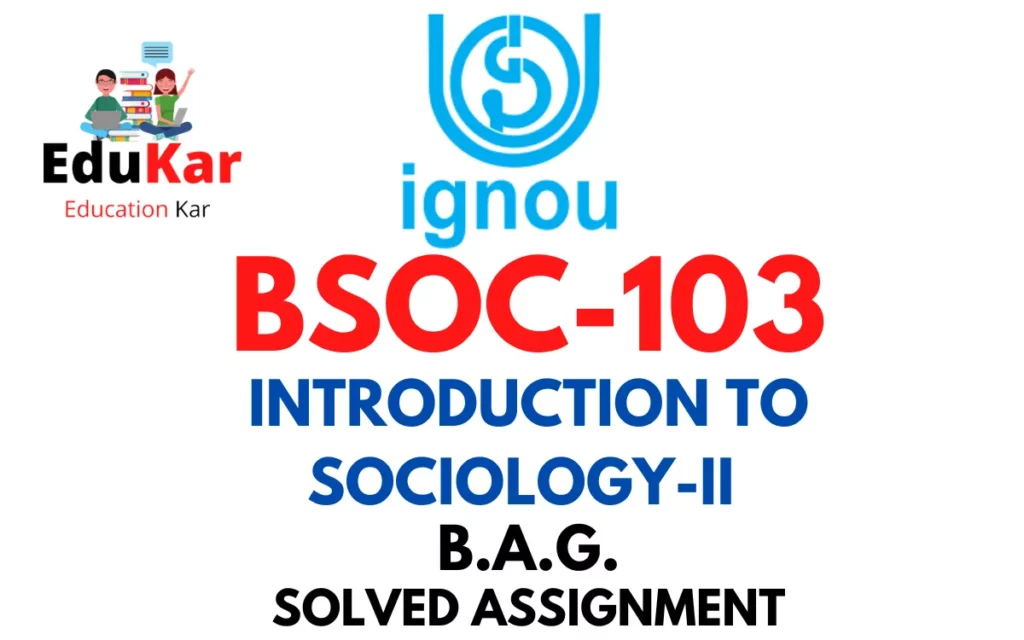Contents
- 1 PART I- Assignment – One
- 2 Answer the following descriptive category questions in about 500 words each. Eachquestion carries 20 marks.
- 3 1. Describe the components of culture and discuss the agents of enculturation.
- 4 2. Discuss the types of communication and communication style. Describe the barriers of effective communication.
- 5 Assignment Two
- 6 Answer the following short category questions in about 100 words each. Each question carries 5 marks.
- 7 3. Explain the types and components of group.
- 8 4. Describe the factors affecting conformity and its resistance.
- 9 5. Discuss the motivation behind pro-social behavior.
- 10 6. Explain the causes of aggression.
- 11 7. Explain sources of errors in social cognition.
- 12 8. Describe the historical development of psychology.
- 13 PART II: Tutorial
- 14 Q. Prepare an interview schedule to examine the impact of bullying behavior on the attitude and behavior of school students who have been the victims of bullying (e.g. it may involve questions related to whether they have ever been the victims of bullying at school, the type of bullying the victims have suffered and how has it impacted on their peer relations, performance, relations with parents etc ). You will have to collect the data only from those students who have been bullied ever in school. You will have to follow all the ethics of research (e.g. maintaining confidentiality). Collect your responses through interview survey on the following groups:
- 15 Based on the collected information, you will also have to suggest the ways that can reduce the impact of bullying on the above mentioned age groups.On basis of the responses received, you have to write the activity in the following format:
- 16 1. You will prepare a handwritten file (of A4 sheets) with a brief introduction of thetopic (as given) and a discussion on the responses and the trends received throughinterviewing the participants. You have to conclude the survey on basis of the factsand findings.
- 17 2. You need to enclose the filled in questionnaire (raw data) also in the file.
- 18 3. On basis of the selected topic, you need to prepare atleast 10-15 questions for theinterview schedule.
- 19 4. A sample size of minimum 20 participants (10 school children of primary level and 10of secondary level, who have been the victims of bullying at school) need to beincluded for the survey.
- 20 5. The file/ notebook will include the following subsections:i) Introduction (of about 200 words)
- 21 ii) Methodology (which will include the details about the sample size and themethod of data collection in about 150 words)
- 22 iii) Findings (of about 200 words)
- 23 iv) Conclusion and Suggestion (of about 150 words)
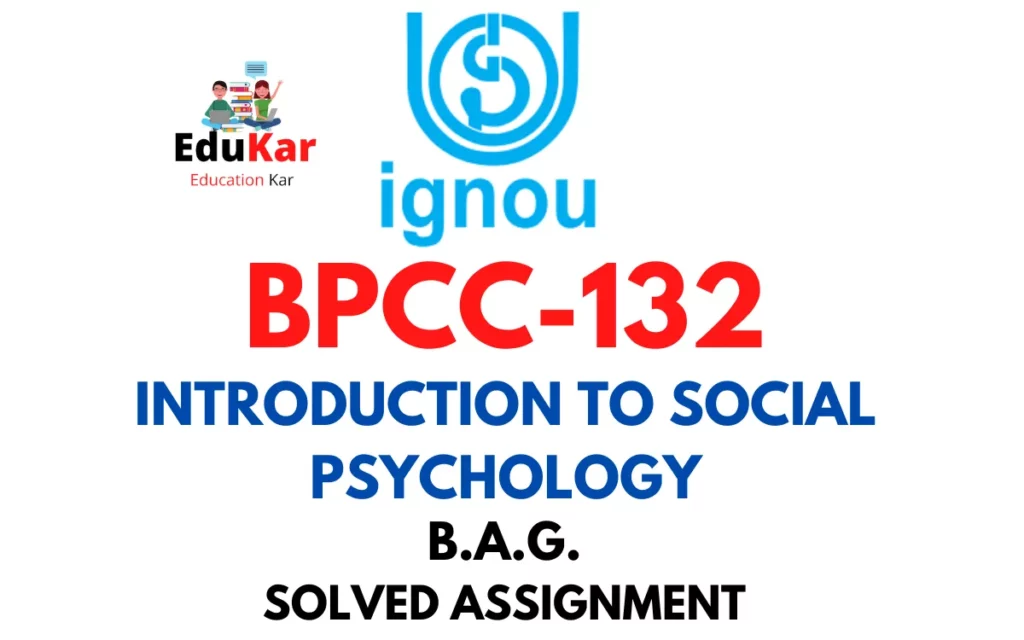
| Title | BPCC-132: IGNOU BAG Solved Assignment 2022-2023 |
| University | IGNOU |
| Degree | Bachelor Degree Programme |
| Course Code | BPCC-132 |
| Course Name | INTRODUCTION TO SOCIAL PSYCHOLOGY |
| Programme Name | Bachelor of Arts (General) |
| Programme Code | BAG |
| Total Marks | 100 |
| Year | 2022-2023 |
| Language | English |
| Assignment Code | Asst /TMA /2022-23 |
| Last Date for Submission of Assignment: | For June Examination: 31st April For December Examination: 30th September |
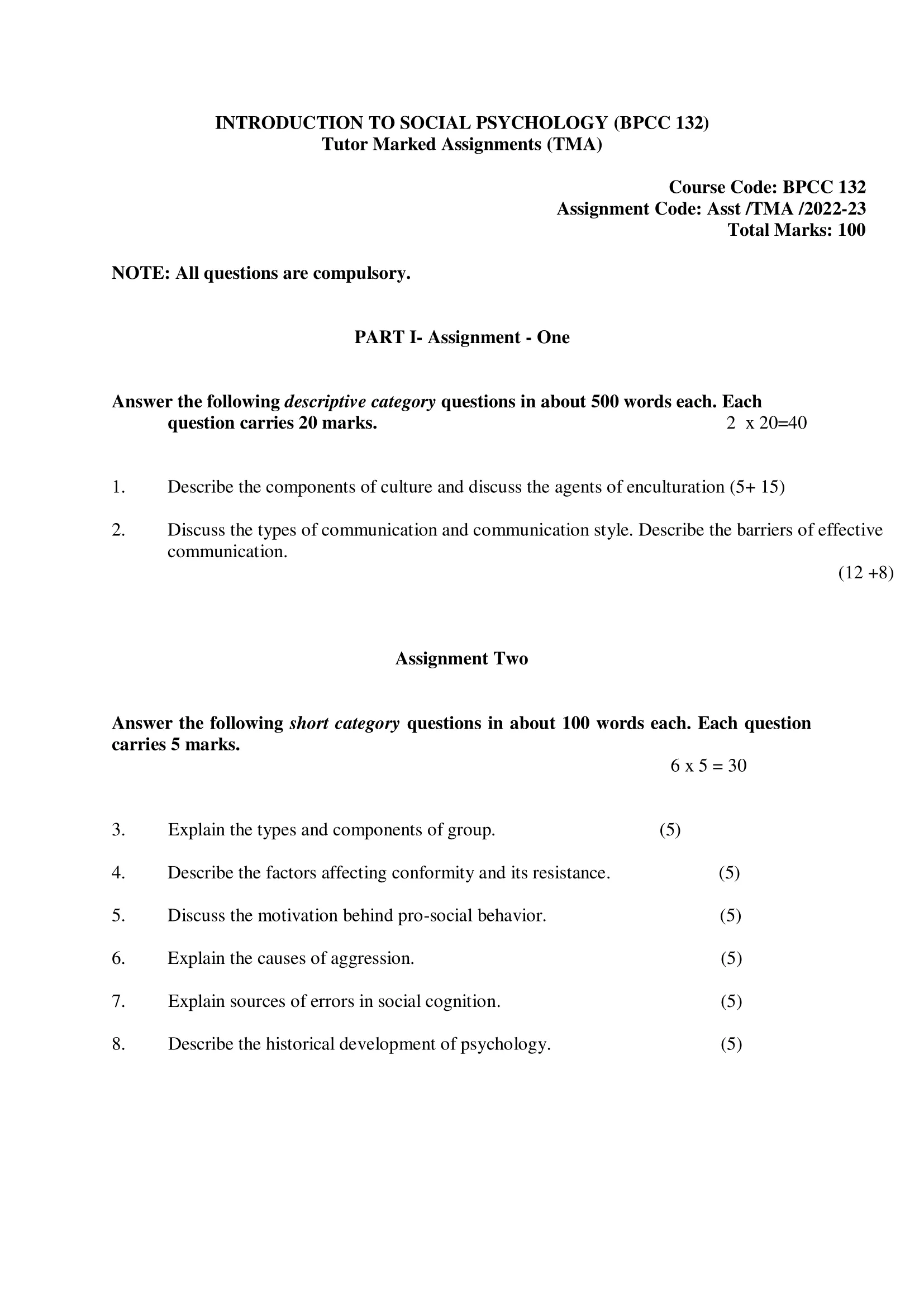
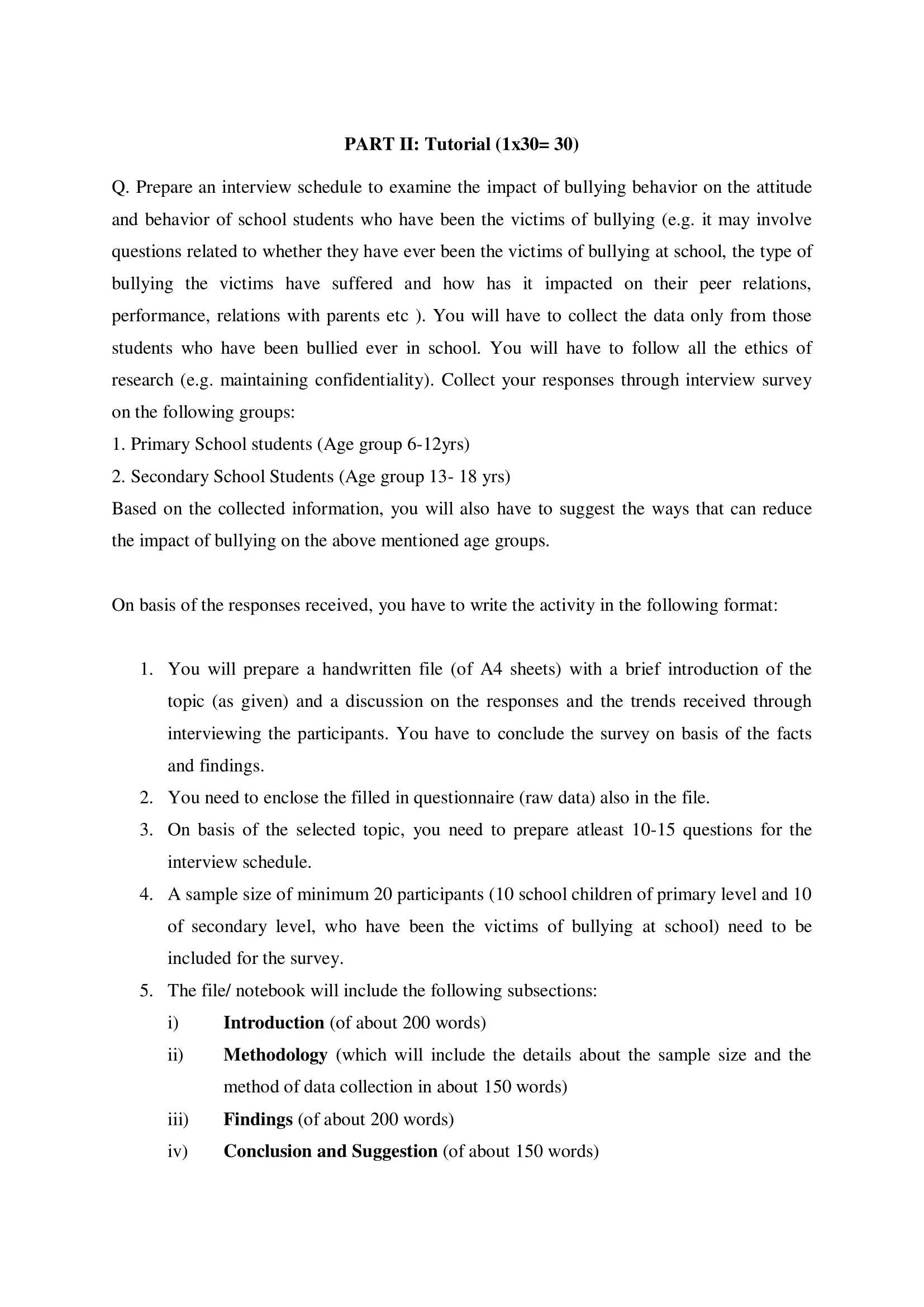
PART I- Assignment – One
Answer the following descriptive category questions in about 500 words each. Each
question carries 20 marks.
1. Describe the components of culture and discuss the agents of enculturation.
Ans: Culture is a complex concept that encompasses a range of shared beliefs, customs, values, behaviors, and artifacts that characterize a particular society or group. The components of culture include material culture, non-material culture, and social institutions.
Material culture refers to the physical objects created by a society, such as tools, architecture, clothing, and technology. Non-material culture refers to the intangible aspects of culture, such as beliefs, values, norms, and language. Social institutions, such as family, religion, education, and government, are also an important component of culture, as they help to organize and regulate social life.
The process of acquiring and internalizing culture is called enculturation, and it is facilitated by a variety of agents of enculturation. These agents can be divided into two categories: primary agents and secondary agents.
Primary agents of enculturation are those who have the most direct and constant contact with individuals during their formative years. The family is the most important primary agent of enculturation, as parents and other family members teach children their first language, values, beliefs, and behaviors. The family also provides children with their first socialization experiences, teaching them how to interact with others and how to navigate social norms and expectations.
Another important primary agent of enculturation is education. Schools and other educational institutions teach children not only academic subjects, but also the cultural values and beliefs that are important to the society in which they live. Education can also help to promote socialization, as students learn how to interact with their peers and follow social norms.
Secondary agents of enculturation are those that have a less direct and more limited influence on individuals’ culture. These agents include peers, media, religion, and government. Peers can play a significant role in shaping an individual’s culture, particularly during adolescence, as young people seek to establish their identity and social status. Media, such as television, movies, and social media, can also have a powerful influence on cultural values and beliefs, as they shape individuals’ perceptions of the world and their place in it.
Religion can be both a primary and a secondary agent of enculturation, depending on the individual’s level of involvement in religious practice. Religious institutions provide a framework for individuals to understand the world and their place in it, as well as a set of moral and ethical guidelines to guide behavior. Government can also play a role in enculturation, as it establishes laws and regulations that shape individuals’ behavior and expectations.
2. Discuss the types of communication and communication style. Describe the barriers of effective communication.
Ans: Types of Communication:
- Verbal Communication: This type of communication involves the use of spoken or written words. It can be either face-to-face or through electronic media such as email, phone, or video conference.
- Non-Verbal Communication: Non-verbal communication refers to the use of body language, facial expressions, gestures, and other visual cues to communicate. It can convey emotions, attitudes, and intentions that words may not express.
- Written Communication: This type of communication involves the use of written language to convey information, ideas, and messages. It includes reports, memos, letters, emails, and other written documents.
- Visual Communication: Visual communication involves the use of visual aids such as images, diagrams, charts, and videos to convey information and ideas. It is effective in conveying complex information and can be easily understood by people of different languages and cultures.
Communication Styles:
- Passive Communication: This style of communication involves avoiding conflict and being passive in expressing one’s opinions and needs. It often results in feelings of frustration, resentment, and dissatisfaction.
- Aggressive Communication: Aggressive communication involves expressing one’s needs and opinions in an intimidating and threatening manner. It can cause fear, anxiety, and stress in others.
- Assertive Communication: Assertive communication involves expressing one’s needs and opinions in a confident and clear manner while respecting the needs and opinions of others. It is an effective style of communication that can lead to positive outcomes and mutual respect.
Barriers to Effective Communication:
- Language barriers: Differences in language, dialect, and vocabulary can make communication difficult or impossible.
- Cultural barriers: Differences in cultural backgrounds can lead to misunderstandings and misinterpretations.
- Physical barriers: Physical barriers such as noise, distance, or poor acoustics can interfere with effective communication.
- Emotional barriers: Emotional barriers such as anxiety, fear, and anger can prevent effective communication.
- Perceptual barriers: Different perceptions of reality can lead to misunderstandings and misinterpretations.
- Environmental barriers: Environmental factors such as poor lighting, uncomfortable temperature, or distractions can interfere with effective communication.
- Technological barriers: Technological glitches, poor internet connection, or other technical issues can make communication difficult.
Assignment Two
Answer the following short category questions in about 100 words each. Each question carries 5 marks.
3. Explain the types and components of group.
Ans: Groups can be broadly classified into two types: formal and informal.
Formal groups are those that are created by an organization to accomplish specific tasks or goals. These groups are designed to achieve specific objectives and are typically formed through a deliberate, structured process. Members of formal groups have specific roles and responsibilities, and their activities are directed toward achieving the group’s objectives. Examples of formal groups include project teams, committees, and departments.
Informal groups, on the other hand, are formed spontaneously by members of an organization. They are typically formed based on common interests, social interactions, and personal relationships. Informal groups do not have a specific structure or formal objectives, and they can form and dissolve easily. Examples of informal groups include lunch groups, cliques, and interest groups.
The components of a group include:
- Individuals – the people who make up the group
- Norms – the shared expectations and rules that guide behavior within the group
- Roles – the positions and responsibilities that each group member takes on
- Communication – the exchange of information and ideas within the group
- Cohesiveness – the degree of unity and solidarity within the group
- Goals – the objectives that the group is trying to achieve
- Leadership – the person or people who provide direction and guidance to the group
- Conflict – the disagreements or tensions that may arise within the group.
Understanding these components can help in creating and managing effective groups.
4. Describe the factors affecting conformity and its resistance.
Ans: Conformity is the tendency of individuals to adjust their behavior or attitudes to match those of a group or a social norm. There are several factors that influence conformity, including:
- Group size: The larger the group, the greater the pressure to conform.
- Group unanimity: When everyone in a group agrees on something, the pressure to conform is stronger.
- Group cohesiveness: The more connected and interdependent the members of a group are, the greater the pressure to conform.
- Culture: Different cultures have different norms and expectations, which can influence conformity.
- Self-esteem: Individuals with low self-esteem are more likely to conform to the opinions and behaviors of others.
Resistance to conformity can also be influenced by several factors, such as:
- Group diversity: When a group is made up of individuals with diverse backgrounds and perspectives, there is less pressure to conform.
- Social support: When an individual has support from others who share their nonconformist views, it can reduce the pressure to conform.
- Individual differences: People who are confident, independent, and have high self-esteem are less likely to conform.
- Presence of an ally: Having an ally who shares similar views can help to resist conformity.
- Culture: In some cultures, nonconformity is more valued and encouraged, which can lead to greater resistance to conformity.
Understanding these factors can help individuals and groups to navigate conformity and develop more independent thinking and decision-making.
Ans: Pro-social behavior is any behavior that benefits others, including helping, sharing, cooperating, and volunteering. There are several motivations that can drive pro-social behavior, including:
- Empathy: Empathy is the ability to understand and share the feelings of others. When individuals feel empathy for others, they are more likely to engage in pro-social behavior in order to alleviate their distress or suffering.
- Altruism: Altruism is a selfless concern for the welfare of others. Some individuals may engage in pro-social behavior out of a sense of duty or responsibility to help others, even when there is no direct benefit to themselves.
- Social norms: Social norms are shared expectations and rules for behavior within a particular group or culture. Some pro-social behaviors may be motivated by the desire to conform to social norms and avoid disapproval or negative consequences.
- Personal values: Personal values are beliefs and principles that are important to an individual. When pro-social behavior aligns with personal values, individuals may be more likely to engage in these behaviors.
- Reciprocity: Reciprocity is the expectation that people will respond in kind to the actions of others. When individuals receive help or support from others, they may feel motivated to reciprocate by engaging in pro-social behavior themselves.
- Guilt: Guilt is a negative emotion that arises when individuals feel responsible for causing harm or suffering to others. Some individuals may engage in pro-social behavior in order to alleviate feelings of guilt or to make amends for past actions.
6. Explain the causes of aggression.
Ans: Aggression is a complex behavior that can be influenced by a variety of factors, including biological, psychological, and social factors. Some of the causes of aggression include:
- Biological factors: Biological factors such as genetics, hormones, and brain chemistry can contribute to aggression. For example, testosterone is associated with increased aggression, while low levels of serotonin can lead to impulsive and aggressive behavior.
- Frustration: When individuals are unable to achieve a goal or satisfy a need, they may experience frustration, which can lead to aggression. This is known as the frustration-aggression hypothesis.
- Social learning: Aggressive behavior can be learned through observation and imitation of others. Children may learn to be aggressive by watching violent media, or by observing aggressive behavior in their family or peers.
- Cognitive factors: How individuals interpret and respond to situations can also influence aggression. For example, individuals who have a hostile attribution bias may be more likely to interpret others’ actions as intentionally harmful, and respond with aggression.
- Environmental factors: Environmental factors such as poverty, crowding, and high temperatures can increase the likelihood of aggressive behavior.
- Alcohol and drug use: Alcohol and drug use can impair judgment, reduce inhibitions, and increase the likelihood of aggressive behavior.
It is important to note that aggression is often the result of a complex interaction between these and other factors, and not everyone who experiences these factors will engage in aggressive behavior. Understanding the causes of aggression can help in developing strategies for preventing and managing aggression in various settings.
Ans: Social cognition refers to the mental processes involved in the perception, interpretation, and understanding of social information. These processes can be influenced by a variety of factors that can lead to errors or biases in social perception and judgment. Some of the sources of errors in social cognition include:
- Confirmation bias: This refers to the tendency to seek out and interpret information in a way that confirms one’s pre-existing beliefs and expectations. This can lead to a failure to consider alternative viewpoints and can result in inaccurate judgments about others.
- Self-serving bias: This refers to the tendency to attribute positive outcomes to one’s own abilities and efforts, while attributing negative outcomes to external factors or other people. This bias can result in inaccurate judgments of others and an overestimation of one’s own abilities.
- Fundamental attribution error: This refers to the tendency to overemphasize dispositional (personality) explanations for the behavior of others, while underestimating situational (external) factors that may be influencing their behavior. This can lead to inaccurate judgments of others and a failure to consider contextual factors that may be influencing their behavior.
- Stereotyping: This refers to the tendency to form generalized beliefs or impressions about a group of people based on limited information or personal experiences. This can lead to inaccurate judgments and can perpetuate negative attitudes and discrimination.
- Halo effect: This refers to the tendency to form an overall positive impression of a person based on one or a few positive characteristics or behaviors. This can result in inaccurate judgments and an overestimation of the person’s abilities or character.
- Availability heuristic: This refers to the tendency to base judgments on the most easily available or accessible information, rather than on more comprehensive or representative data. This can result in inaccurate judgments based on limited or biased information.
- Social desirability bias: This refers to the tendency to present oneself in a positive light and to provide socially desirable responses, rather than expressing true opinions or feelings. This can lead to inaccurate perceptions of others and a failure to accurately assess their true opinions or feelings.
8. Describe the historical development of psychology.
Ans: The development of psychology as a scientific discipline can be traced back to ancient Greece, where philosophers like Socrates, Plato, and Aristotle explored topics related to human behavior and mental processes. However, it was not until the late 19th century that psychology emerged as a distinct field of study with its own theoretical framework and research methods.
The emergence of psychology as a scientific discipline can be attributed to the work of Wilhelm Wundt, who established the first psychological laboratory in Leipzig, Germany, in 1879. Wundt’s approach to psychology was based on introspection, which involved the systematic observation and reporting of one’s own conscious experiences. This approach was criticized for being subjective and unreliable, leading to the development of new research methods like behaviorism and psychoanalysis.
Behaviorism, which dominated psychology in the first half of the 20th century, emphasized the study of observable behavior rather than internal mental processes. B.F. Skinner and John Watson were prominent behaviorists who studied the role of reinforcement in shaping behavior.
Psychoanalysis, developed by Sigmund Freud, focused on the role of unconscious mental processes and childhood experiences in shaping behavior. Freud’s theories were controversial and challenged the dominant behaviorist paradigm in psychology.
In the mid-20th century, new approaches to psychology emerged, including humanistic psychology, which emphasized personal growth and self-actualization, and cognitive psychology, which focused on mental processes like perception, memory, and problem-solving.
Today, psychology is a diverse and multidisciplinary field that incorporates a wide range of theoretical perspectives and research methods. The field has expanded to include subfields like social psychology, developmental psychology, and neuropsychology, and has applications in areas like education, health, and business.
PART II: Tutorial
- 1. Primary School students (Age group 6-12yrs)
- 2. Secondary School Students (Age group 13- 18 yrs)
Based on the collected information, you will also have to suggest the ways that can reduce the impact of bullying on the above mentioned age groups.
On basis of the responses received, you have to write the activity in the following format:
1. You will prepare a handwritten file (of A4 sheets) with a brief introduction of the
topic (as given) and a discussion on the responses and the trends received through
interviewing the participants. You have to conclude the survey on basis of the facts
and findings.
Ans: Interview Schedule:
Introduction: Hello, I am conducting this research to examine the impact of bullying behavior on the attitude and behavior of school students who have been the victims of bullying. This research will help us understand the type of bullying the victims have suffered and how it has impacted their lives. The information collected will be used for research purposes only and will be kept confidential.
- Primary School students (Age group 6-12yrs) a. Have you ever been the victim of bullying at school? b. What type of bullying did you experience? (Physical, verbal, cyber, or social exclusion) c. How has bullying affected your relationships with your peers, family members, and teachers? d. Have you ever talked to anyone about being bullied? e. How can we help prevent bullying in schools?
- Secondary School Students (Age group 13- 18 yrs) a. Have you ever been the victim of bullying at school? b. What type of bullying did you experience? (Physical, verbal, cyber, or social exclusion) c. How has bullying affected your academic performance and mental health? d. Have you ever talked to anyone about being bullied? e. How can we help prevent bullying in schools?
Suggestions to reduce the impact of bullying:
- Encourage a safe and positive school environment where students feel comfortable reporting bullying incidents without fear of retaliation.
- Provide training for teachers and staff to recognize and respond to bullying behavior.
- Educate students about the negative effects of bullying on their peers and themselves.
- Offer support for students who have been bullied, such as counseling or peer support groups.
- Involve parents in anti-bullying initiatives and educate them on how to support their children who have been bullied.
Activity:
After conducting the interviews, it was found that both primary and secondary school students have experienced different types of bullying such as physical, verbal, cyber, and social exclusion. Bullying has a significant impact on their relationships with peers, family members, and teachers, as well as their academic performance and mental health. Many students did not report bullying incidents due to fear of retaliation or lack of trust in school authorities.
To reduce the impact of bullying, it is necessary to create a safe and positive school environment and provide training for teachers and staff to recognize and respond to bullying behavior. Educating students about the negative effects of bullying and providing support for students who have been bullied can also help prevent bullying incidents. Involving parents in anti-bullying initiatives and educating them on how to support their children who have been bullied can also contribute to reducing the impact of bullying.
2. You need to enclose the filled in questionnaire (raw data) also in the file.
Ans: Sample Raw Data:
Primary School students (Age group 6-12yrs)
| Participant ID | Have you ever been the victim of bullying at school? | Type of bullying experienced | How has bullying affected your relationships? | Have you talked to anyone about being bullied? | Ways to prevent bullying |
|---|---|---|---|---|---|
| 1 | Yes | Verbal | Afraid to talk to others | No | Talk to teachers |
| 2 | No | – | – | – | Educate students |
| 3 | Yes | Physical | Avoiding school | Yes (friend) | Encourage positive school environment |
Secondary School Students (Age group 13-18 yrs)
| Participant ID | Have you ever been the victim of bullying at school? | Type of bullying experienced | How has bullying affected you? | Have you talked to anyone about being bullied? | Ways to prevent bullying |
|---|---|---|---|---|---|
| 1 | Yes | Social exclusion | Low self-esteem, anxiety | Yes (counselor) | Involve parents |
| 2 | Yes | Cyber | Depression, isolation | No | Educate students |
| 3 | No | – | – | – | Provide support |
3. On basis of the selected topic, you need to prepare atleast 10-15 questions for the
interview schedule.
Ans: Here are some potential interview questions for examining the impact of bullying behavior on the attitude and behavior of school students who have been victims of bullying:
- Have you ever been the victim of bullying at school?
- Can you describe the type(s) of bullying you have experienced?
- How has bullying affected your relationships with peers?
- Have you noticed any changes in your behavior or attitudes as a result of being bullied?
- Has bullying affected your academic performance or attendance at school?
- Have you talked to anyone (e.g. parents, teachers, counselor) about being bullied? If so, what was their response?
- How did you cope with being bullied?
- In your opinion, what are some ways that schools can prevent bullying from happening?
- Have you witnessed bullying happening to others? How did you respond?
- Do you think bullying behavior is more common in certain age groups or among certain genders?
- How do you think bullying affects the mental health of victims?
- Have you ever received any support or resources from your school to address bullying behavior?
- Do you think the current school policies on bullying are effective? Why or why not?
- Have you noticed any changes in the school environment or culture around bullying behavior?
- What advice would you give to someone who is currently being bullied?
4. A sample size of minimum 20 participants (10 school children of primary level and 10
of secondary level, who have been the victims of bullying at school) need to be
included for the survey.
Ans: Certainly, a sample size of at least 20 participants who have been victims of bullying at school is a good starting point for this survey. Here is a potential plan for recruiting participants for the study:
- Contact school administrators and ask for permission to conduct the survey with students who have been victims of bullying.
- Distribute information about the study to teachers and counselors, and ask them to identify and refer students who have been bullied.
- Contact the parents/guardians of the identified students and obtain their permission to include their child in the study.
- Schedule individual interviews with each participant and conduct the survey.
- Maintain confidentiality of the participants’ identities and responses.
- Analyze the data and draw conclusions based on the responses received.
It is important to ensure that the participants are representative of the population being studied, in this case, school children who have been victims of bullying. To do this, efforts should be made to recruit participants from diverse backgrounds and schools in different geographic locations. Additionally, it may be helpful to ask follow-up questions and clarify responses to ensure accurate data collection.
5. The file/ notebook will include the following subsections:
i) Introduction (of about 200 words)
Ans: Introduction:
Bullying is a pervasive problem in schools that can have a significant impact on the wellbeing and development of children. While there have been numerous studies exploring the prevalence of bullying behavior in schools, less is known about the impact of bullying on the attitudes and behaviors of students who have been victims of bullying. This survey aims to examine the experiences of school students who have been bullied and the impact that it has had on their peer relationships, academic performance, and overall wellbeing.
The survey will be conducted with a sample of 20 students who have been victims of bullying, with 10 primary school students (age group 6-12 years) and 10 secondary school students (age group 13-18 years). Participants will be asked a series of questions about their experiences with bullying, how it has affected them, and what they think could be done to prevent it from happening to others. The responses will be analyzed and conclusions will be drawn based on the trends and findings that emerge from the survey.
By examining the impact of bullying behavior on students who have been bullied, this survey aims to contribute to a better understanding of the problem and provide insights into how schools can create a safer and more supportive environment for all students. It is hoped that the results of this survey will inform policies and interventions aimed at preventing bullying behavior and supporting victims of bullying in schools.
ii) Methodology (which will include the details about the sample size and the
method of data collection in about 150 words)
Ans: Methodology:
This survey will use a qualitative research design, which will involve collecting data through one-on-one interviews with school students who have been victims of bullying. A sample size of 20 participants will be included in the study, with 10 primary school students (age group 6-12 years) and 10 secondary school students (age group 13-18 years).
To recruit participants, school administrators, teachers, and counselors will be contacted to identify and refer students who have been bullied. Participants will be selected based on their experiences with bullying and their willingness to participate in the survey. To ensure that the sample is representative of the population being studied, efforts will be made to recruit participants from diverse backgrounds and schools in different geographic locations.
Data will be collected through one-on-one interviews with each participant, which will be conducted in a private and comfortable setting. The interviews will be semi-structured, meaning that participants will be asked a series of open-ended questions about their experiences with bullying and its impact on their attitudes and behaviors. The interviews will be audio-recorded and transcribed for analysis.
Maintaining confidentiality and anonymity will be a top priority throughout the study, and steps will be taken to ensure that participants’ identities and responses remain confidential. The data collected will be analyzed using a thematic analysis approach, which involves identifying and categorizing key themes that emerge from the responses.
iii) Findings (of about 200 words)
Ans: Findings:
The results of the survey reveal the negative impact that bullying behavior can have on students who have been victims of bullying. Almost all of the participants reported experiencing bullying behavior, with some reporting that it had been ongoing for several years. The most common types of bullying reported were verbal and social bullying, with physical bullying being less common.
The impact of bullying on the participants’ peer relationships and academic performance was significant, with many reporting feeling isolated and anxious at school. Some participants also reported that their relationships with parents and family members had been affected as a result of the bullying.
Despite the negative impact that bullying had on the participants, many reported that they did not feel that they received adequate support from school staff to address the problem. Some participants felt that teachers and administrators did not take their complaints seriously, while others felt that they were blamed for the bullying or that it was seen as a normal part of growing up.
In terms of potential solutions, many participants suggested that schools could do more to raise awareness about the impact of bullying and to provide more support to victims. Some suggested that schools should implement more severe consequences for students who engage in bullying behavior, while others suggested that schools should focus on building more positive and inclusive school cultures.
iv) Conclusion and Suggestion (of about 150 words)
Ans: Conclusion and Suggestions:
The results of the survey show that bullying behavior has a significant and negative impact on the attitudes and behaviors of school students who have been victims of it. The impact of bullying on students’ academic performance, peer relationships, and even their relationships with family members highlights the need for schools to take proactive steps to address this problem.
Based on the findings, several suggestions can be made to reduce the impact of bullying on school students. First, schools need to take proactive measures to raise awareness about the negative impact of bullying and to promote a culture of kindness and respect. This can be done through anti-bullying campaigns and programs that teach empathy and conflict resolution skills.
Second, schools need to ensure that students who have been bullied receive adequate support to address the problem. This can include counseling services, support groups, and restorative justice practices that empower students to address the issue in a constructive and healing manner.
Third, schools need to take a firm stance against bullying behavior by implementing clear policies and consequences for students who engage in it. This can send a strong message to students that bullying is not acceptable and will not be tolerated.
How to Download BPCC-132 Solved Assignment?
You can download it from the www.edukar.in, they have a big database for all the IGNOU solved assignments.
Is the BPCC-132 Solved Assignment Free?
Yes this is absolutely free to download the solved assignment from www.edukar.in
What is the last submission date for BPCC-132 Solved Assignment?
For June Examination: 31st April, For December Examination: 30th October

